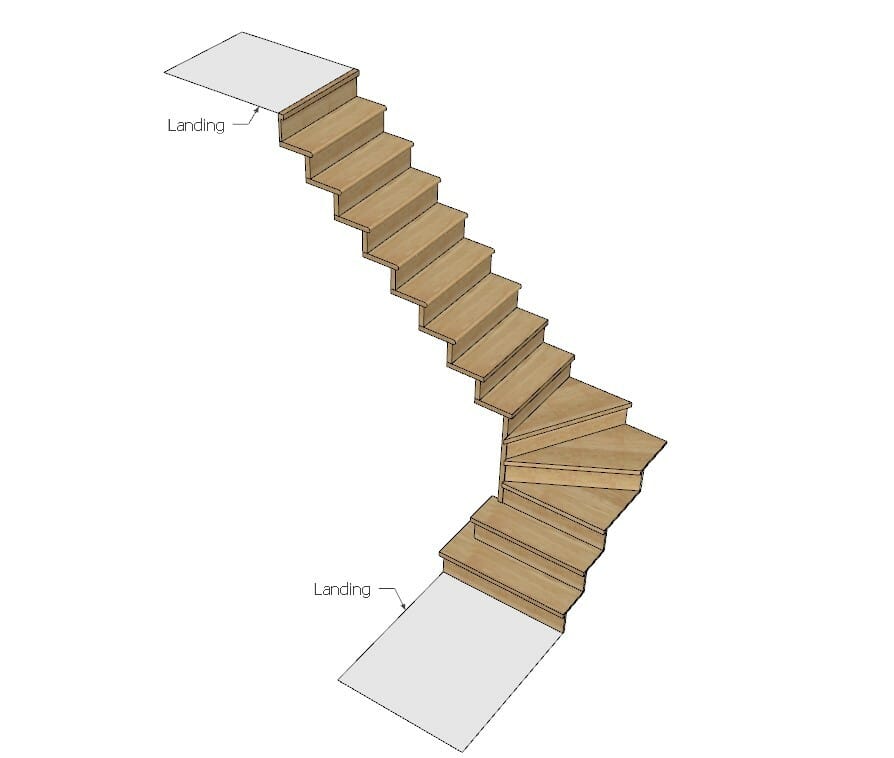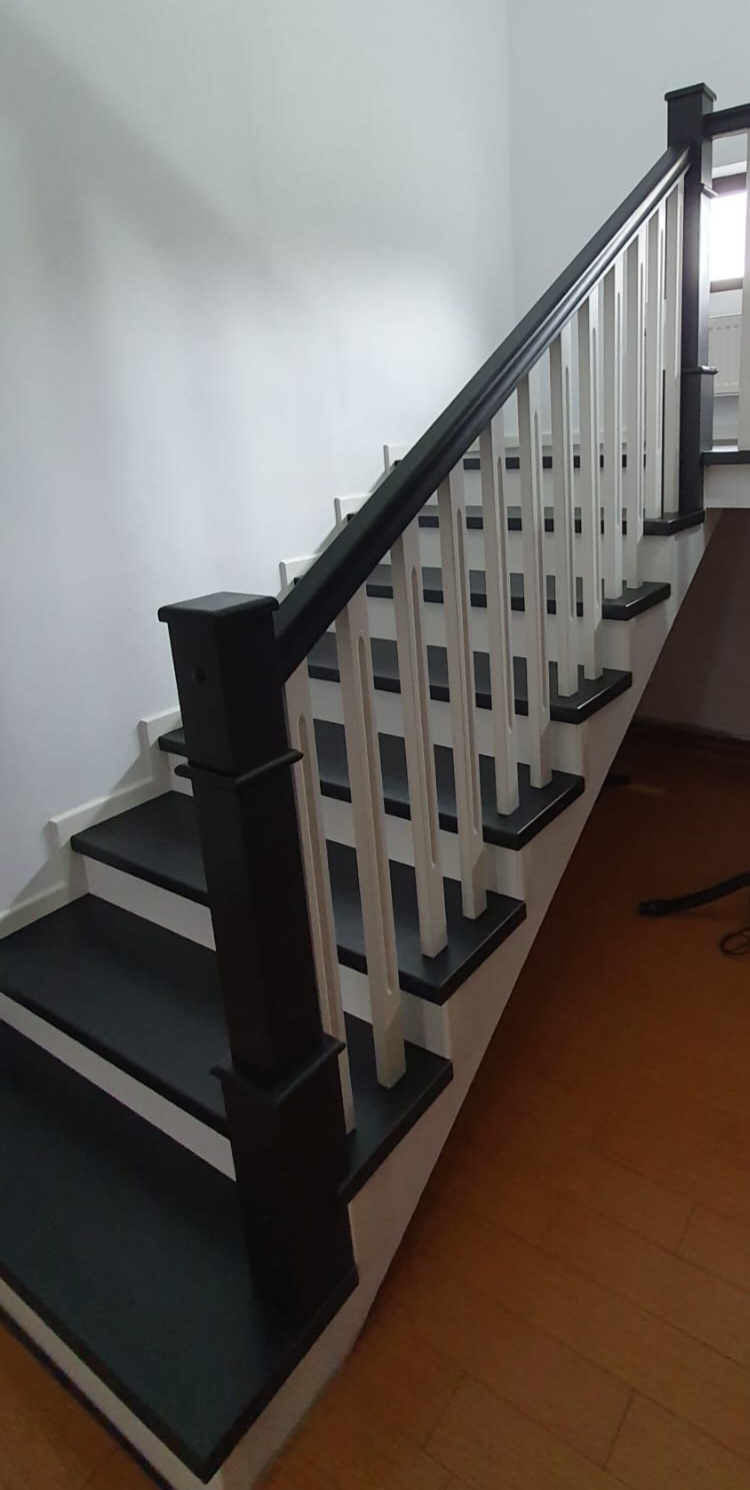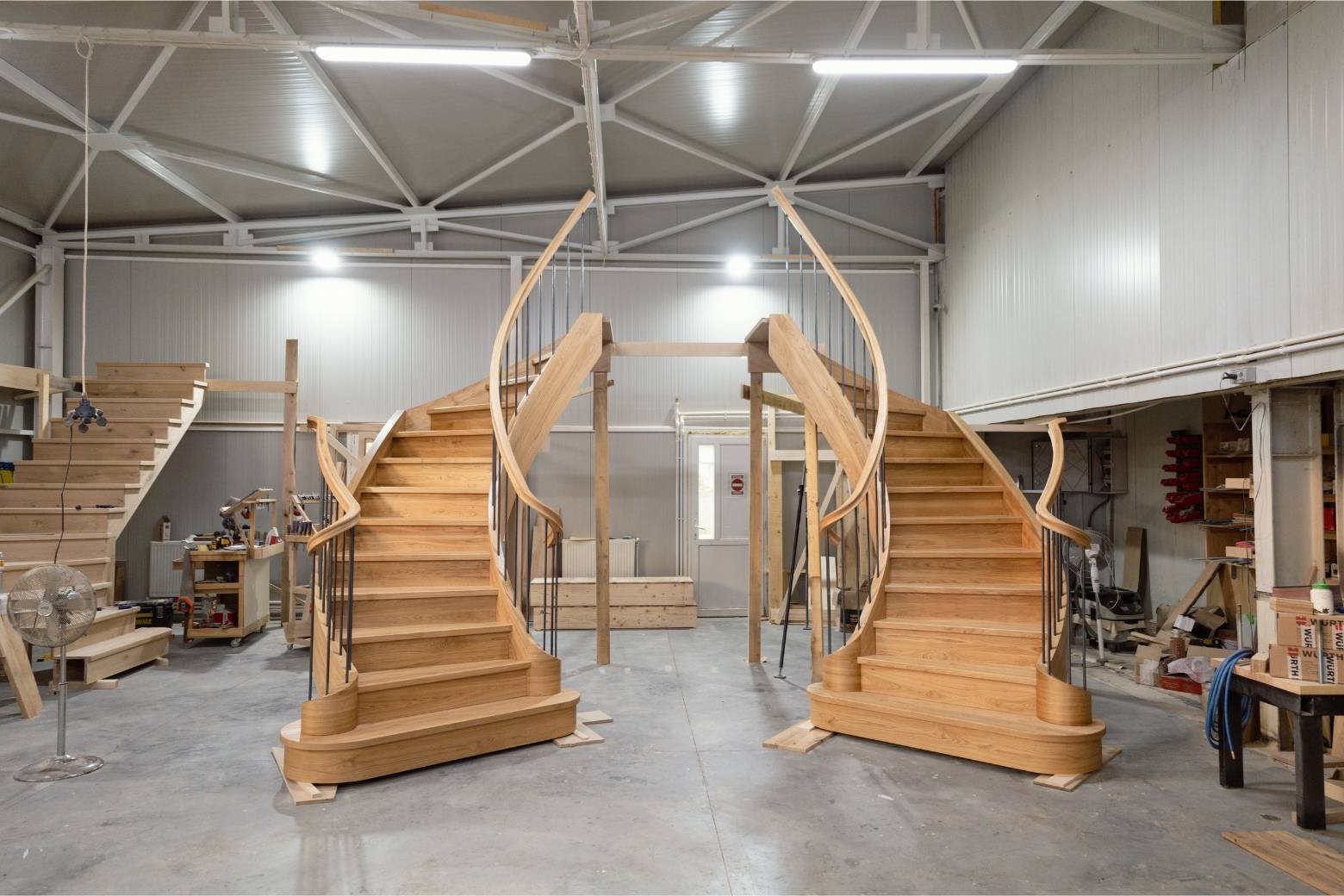Staircase components explained: from base to balustrade
Whether you’re planning a complete renovation or embarking on a new build, the terminology around staircase components can sometimes feel overwhelming. Understanding the parts of a staircase – and how they work together – helps you make confident design decisions and communicate clearly with designers, builders, and installers.
At Apex, we combine expert knowledge with precision craftsmanship to ensure that every component of your staircase is designed and built to perfection, from the profile of the handrail to the finish on the treads.
Why It’s Important to Know the Parts of a Staircase
Having a solid grasp of what the parts of a staircase are called is an essential first step in any building or renovation project. It’s the difference between asking for “the thing you hold on to” and a “handrail,” which instantly elevates your conversation with professionals. It ensures your vision – whether for a walnut staircase or a bespoke oak staircase – is understood and accurately brought to life.
Furthermore, understanding the correct terminology allows you to be an informed customer, confident in discussing material options, structural considerations, and design styles. For example, knowing the difference between a traditional balustrade and a minimalist design can completely transform the feel of your space. This also highlights Apex’s ability to customise each component to suit your individual style and space.
Main Parts of a Staircase (Overview)
A staircase is made up of interconnected components working together to form a safe, functional, and visually appealing structure. These include:
- Treads
- Risers
- Stringers
- Newel Posts
- Handrails
- Spindles (or Balusters)
- Balustrade
- Landing
- Nosing
Let’s explore each in more detail.
Treads and Risers
The tread is the horizontal surface you step on. It experiences the most wear, so its material and finish are key for both durability and appearance. At Apex, treads are crafted from premium timbers such as oak or walnut.
The riser is the vertical section between each tread. In traditional designs, risers are solid, but in modern installations like our floating staircases, open risers are used to create an airy, spacious effect.
Stringers
The stringers (or strings) are the structural boards running along the sides of the staircase, supporting the treads and risers. In traditional staircases, stringers are often visible and highlight the quality of the timber. In contemporary designs, they can be a striking feature themselves – for example, a bold metal stringer combined with timber treads in a metal frame timber tread staircase.
Newel Posts
A newel post is the main vertical post that anchors the staircase railing at the top, bottom, or at landings. They are both structural and decorative. Newel posts can range from classic turned timber posts in traditional homes to sleek, minimalist designs in contemporary spaces. Apex projects, from curved staircases to twin curved staircases, feature posts that are elegant, robust, and perfectly proportioned.
Handrail
The handrail is the rail you hold for support and safety. It runs along the top of the balustrade and is essential in all staircase designs. The material and profile of a handrail dramatically influence the feel of the staircase, with options from the warm tactility of timber to the sleek precision of metal. In many modern staircases, the handrail is seamlessly integrated into the design, as seen in our metal frame timber tread staircase.
Spindles or Balusters
Spindles (or balusters) are the vertical supports that connect the handrail to the treads. They are a crucial safety feature, preventing falls, and also play a major role in style. A Victorian-inspired turned spindle can create a period feel, while a square-profile spindle adds modern simplicity. In spiral staircases, spindles are often arranged around a central column, while in floating staircases, they may be replaced with glass or minimalist metal options for a contemporary look.
Balustrade
The balustrade is the complete railing system, including the handrail, newel posts, and spindles. It’s both a safety requirement and an opportunity to express style. A well-designed balustrade can be the focal point of a staircase, as seen in the sweeping flow of our curved staircase balustrades.
Landing and Nosing
The landing is the flat platform at the top or between flights of stairs. It provides a resting spot and acts as a transition space.
The nosing is the edge of the tread that extends slightly over the riser. This small detail is important for both safety – improving grip – and aesthetics. At Apex, nosing is carefully detailed to align perfectly with the overall staircase design.
Other Components
For those wanting a complete understanding of staircase terminology:
- Volute: A decorative spiral end to the handrail.
- Gooseneck: A curved section of the handrail that connects different levels.
Base Rail: The horizontal rail at the bottom of the balustrade that supports the spindles.
How Apex Customises Every Component
At Apex, every home is unique, and so is every staircase. Our expertise allows us to combine these components to fit specific needs and design visions. From the seamless flow of a curved staircase to the compact elegance of a spiral staircase, we focus on material selection, proportions, and fine detailing to deliver bespoke staircases crafted to the highest standards.
Conclusion
Understanding the parts of a staircase is the first step toward creating a design you’ll be proud of. It simplifies communication and ensures that your vision is clearly understood. At Apex, we combine technical expertise with exceptional craftsmanship to bring your ideas to life.
→ Contact us to discuss your bespoke staircase project.


